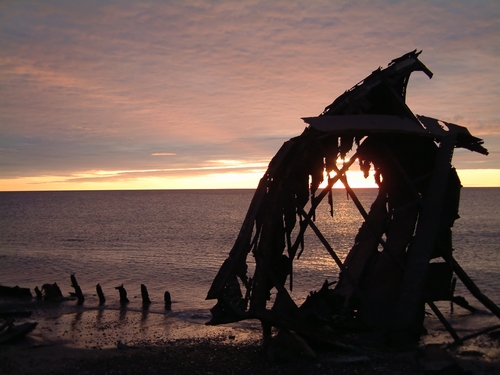Shipwreck off Atlantic City will be turned into historic site

More than 150 years after it sunk, the 132-foot, 358-ton steamer Robert J. Walker will once more take the spotlight thanks to 3D laser scanning. According to Philly.com, the steamer is joining the list of historic sites on the National Register of Historic Places, and will be mapped this summer to help educate the public, scholars and recreational divers about the shipwreck.
3D laser scanning and surveying technology are often the only ways to understand the reasons why ships have sunk, and to provide clear, accurate 2D drawings and 3D models of these sites for informational purposes. This technology has been used before by researchers and even the federal government to gather data about shipwrecks off the U.S. coast. The Associated Press reported in 2011, the Navy worked with federal researchers to gain 3D images of World War II and Civil War shipwrecks off the North Carolina coast. Accurate imagery of shipwrecks can give people a way to learn about the past without damaging the actual sites, better preserving these historic ships.
"Not everybody dives, and so that's why we embrace technologies like this that are cutting edge, cost effective and give you a three-dimensional sense of that ship on the bottom," James Delgado, director of the National Oceanic and Atmospheric Administration's Maritime Heritage Program, told the AP about laser scanning. "The kinds of imagery – it's almost photographic."
The Walker will soon receive these benefits.
An historic ship
The Walker was identified by NOAA just last year, scattered across the ocean floor about 12 miles off the Atlantic City coastline. The ship's location was lost until the 1970s when two fisherman found the wreck. According to NOAA, the ship was one of the first sidewheel steamers built for the U.S. Coast Guard's forerunner, the Revenue Service. It was launched in 1847, and was eventually given to the Coast Survey.
What is known about the shipwreck is that the steamer collided with another ship, the schooner Fanny, at 2:15 a.m. on June 21, 1860, and NOAA suggested the lack of Navy officers aboard the ship, as they had been withdrawn from the Coast Survey as the Civil War loomed, may have contributed to the wreck. Instead, the Walker may have been crewed by civilians; however, according to NOAA, more information needs to be uncovered to be sure.
The mapping will give more insight into the ship's demise, as well as help to tell the story of the 21 crew members who perished as they tried to bring the injured ship into shore after the collision. The shipwreck's mapping is being privately funded.
The data collected by 3D laser scanning can be used to create as-is models of the existing conditions of historic buildings and structures. From 3D models to building information models (BIM) and Historic American Engineering Record (HAER) drawings, details of shipwrecks can come to life for the public and end up solving mysteries about how ships went down. 3D laser scanning can preserve shipwrecks, even while the physical ships decay.
